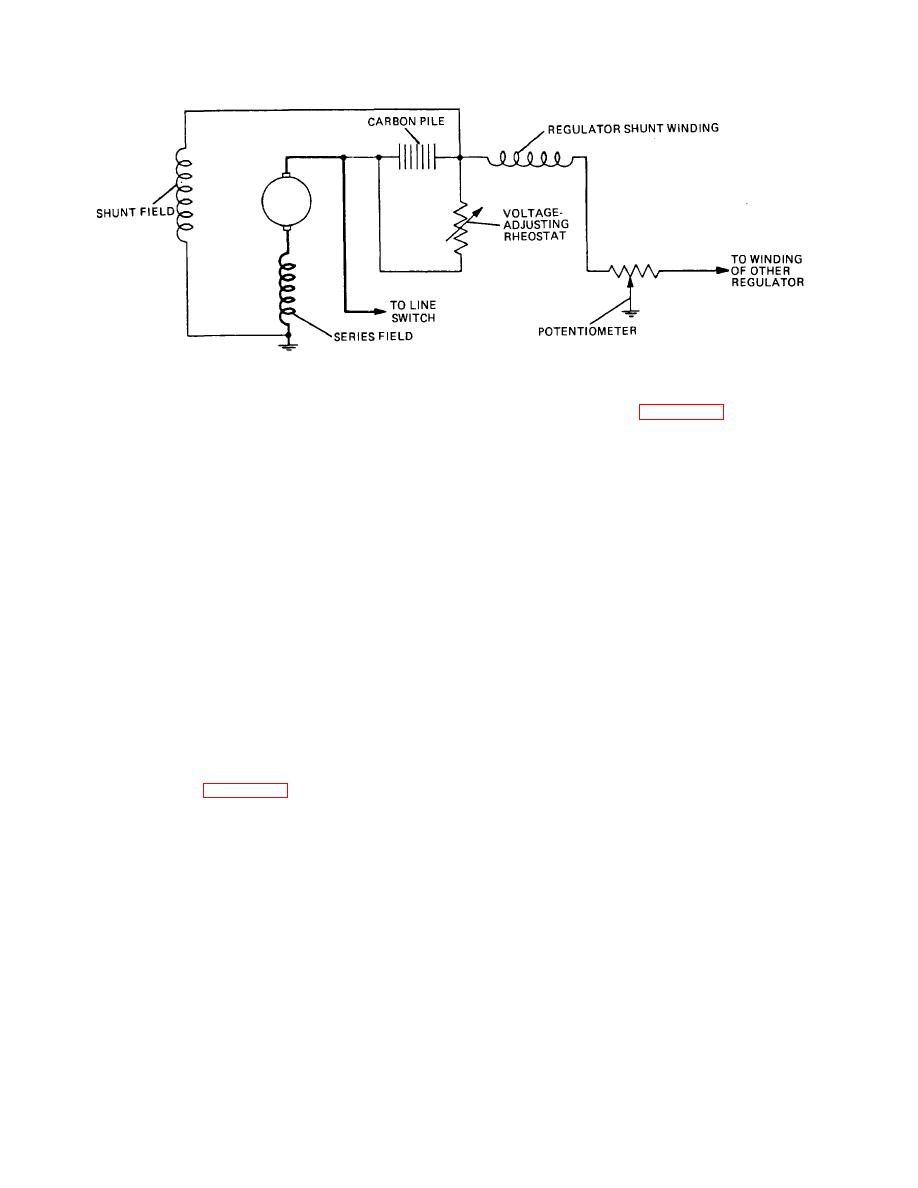
| Tweet |

Custom Search
|
|

|
||
 TM 9-8000
Figure 13-20. Carbon-Pile Regulation of Generators.
b. Rectifier Bridge (Fig. 13-22). The ac generator
For instance, if one regulator is slightly higher than the
other, but both are within specifications, balance can be
produces alternating current at its output. As stated in
achieved by turning the potentiometer knob slightly. This
paragraph 13-6, this is unacceptable for an automotive
puts more resistance into one regulating winding circuit
electrical system. The ac generator is fitted with a
and takes it out of the other, thus achieving the desired
rectifier bridge to convert the output to dc. If the two
results.
output wires of a basic ac circuit are each fitted with a
silicon diode (para 11-5), the alternating cur- rent can be
Section III.13-20.General.Most of the military vehicles are now given one direction and thus be changed to direct
current. To change current direction, use diodes that
equipped with an ac charging system. The reason for
allow current flow toward the alternator on one wire
changing to the ac system is that an alternator is capable
(positive) and away from the alternator on the other wire
of producing a higher voltage at idle speed, whereas a dc
(negative). Because most automotive alternators have
generator produces very little voltage at idle speed.
three outputs (three-phase stator), the rectifier bridge will
Many of the military vehicles are equipped with radios,
consist of six diodes (three positive and three negative).
firing devices, and other high-current-drawing equipment.
The diodes will be connected so that they combine the
When this equipment is in operation and the vehicle's
three ac outputs of the alternator into one dc output.
engine is at a low rpm, a dc generator will not produce
the required current and voltage to keep the batteries
charged and supply the current required to operate the
13-22. Comparison to a DC Generator.
accessories properly.
a. Advantages.
13-21. The Basic Alternator.
(1) The ac generator is configured opposite to the dc
a. Construction (Fig. 13-21).
generator. The current is produced in the stator, which
The alternator is
does not rotate. This compares with the dc generator
composed of the same basic parts as a dc generator.
that produces current from its armature, which must
There is a field that is called a rotor and a generating
transmit its output through brushes. This means that the
part known as the stator. The purpose of the alternator
brushes must be very large and, therefore, will wear out
is to produce more power and operate over a wider
speed range than that of a generator. Because of this,
TA233558
the construction of the functional parts is different. The
stator is the section in which the current is induced. It is
made of a slotted laminated ring with the conductors
placed in the slots. The current generated in the
windings is transferred to the rest of the system through
three stationary terminals.
13-22
|
||
 |
||